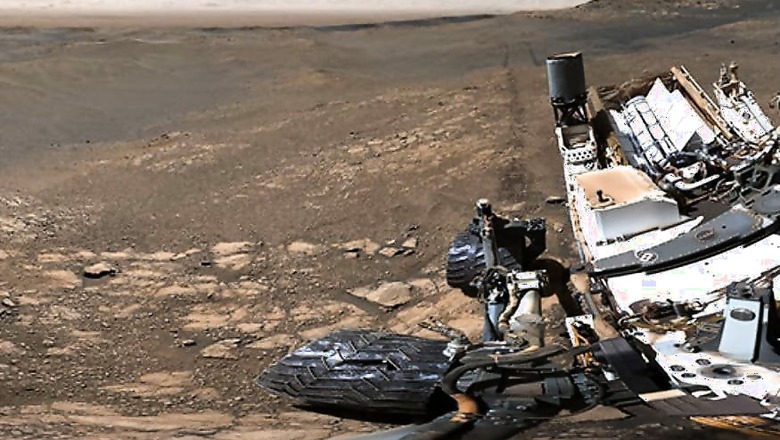
views
NASA's Curiosity rover has been instrumental in our understanding of the Red Planet. Now, it has gone beyond sending critical scientific observations home, and sent what can only be described as incredible — a massive panorama photograph comprising over 1,000 individual images, taken over four days and stitched together to create a single, sweeping photograph that is 1.8 gigapixels in size. With over 1.8 billion pixels in the final photograph, this is the highest resolution shot of its kind, ever, and gives a view of a desolate, dystopian surface that may have once held life at this very point where Curiosity stood still.
Owing to the Thanksgiving holiday in USA between November 24 and December 1, the Curiosity rover was pre-programmed by the programming team of its Mast Camera (Mastcam) module. The holiday presented a unique opportunity in the sense that the rover was required to remain at a single point, as its team of scientists back home went on a week-long leave. As a result, the Mastcam operators in NASA's Jet Propulsion Laboratory (NASA-JPL) back in California, USA programmed the use of its telephoto lens, or the 'right eye' of Curiosity, to shoot the sweeping panorama of the Martian surface in its front, and simultaneously employed its medium-angle 'left eye' to shoot a second, 650-megapixel panorama that also includes the rover's arm and instruments at one corner of the frame.
The consistent lighting conditions of the 1.8 billion-pixel shot taken by Curiosity were orchestrated by Curiosity taking all of the 1,000-odd photographs between noon and 2PM, Mars time. This activity was repeated over four days, amounting to a total shooting time of over six hours. The shot includes the Slangpos crater, which measures 4.8 kilometres in diameter. Other Mars topography visible in the panorama, as explained by Ashwin Vasavada, Curiosity project scientist at NASA-JPL, include the Vera Rubin ridge on the eastern edge of the frame, beside the central butte placed at the foot of Mount Sharp, and the Greenheugh Pediment that runs lateral to the mountain. As Vasavada explains, "This pediment must have formed after the lakes (on Mars) disappeared, causing the mountains to take their present shape."
The photograph also shows very interesting frame elements on Curiosity, including RAD, an equipment that helps us understanding stellar radiation on Mars — a key knowledge for future, manned missions to Mars. It also features a neat little easter egg of sorts, where the sundial on Curiosity still has the words 'To Mars To Explore' etched clearly, despite the peroxide Martian dust. What is amazing to note is how the Martian surface looks like, with some areas resembling a crumbling rocky desert terrain, coupled with the rover's tracks that may look exactly the same in a similar dusty terrain back on Earth. Some areas also look swampy, as if the water still flows around it every now and then.




















Comments
0 comment